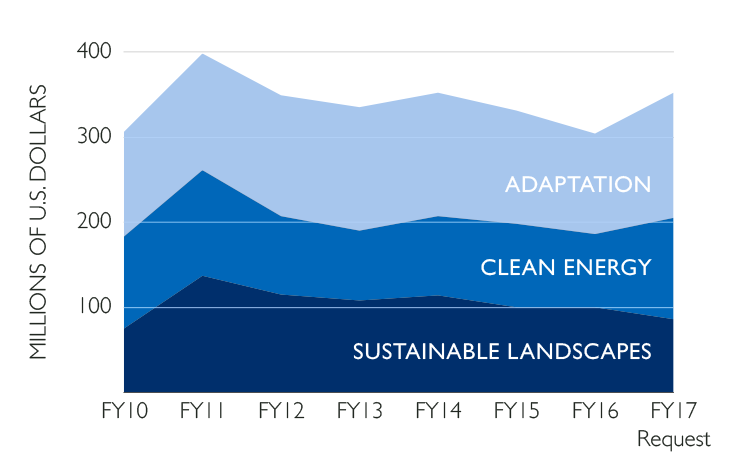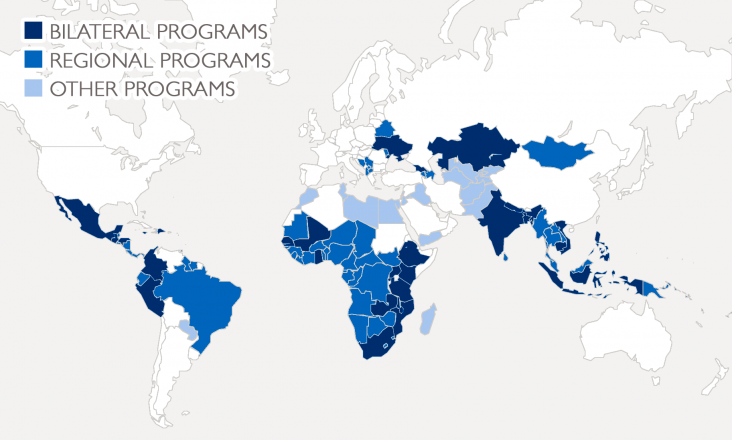- What We Do
- Agriculture and Food Security
- Democracy, Human Rights and Governance
- Economic Growth and Trade
- Education
- Ending Extreme Poverty
- Environment and Global Climate Change
- Global Climate Change
- Conserving Biodiversity and Forests
- Sustainable Urbanization for Global Progress and Security
- Securing Land Tenure and Property Rights for Stability and Prosperity
- Sustainable Land Management
- Environmental Impact Assessment
- Knowledge Management for Environment and Natural Resources
- Sustainable Tourism
- Earth Day
- Gender Equality and Women's Empowerment
- Global Health
- Water and Sanitation
- Working in Crises and Conflict
- U.S. Global Development Lab
USAID’s Climate Change and Development Strategy (2012–2016) guides our work helping countries transition to lasting and climate-resilient, low-emission economic development.
Our Priorities
USAID’s climate strategy has three overarching objectives—Adaptation, Integration and Mitigation—and three priority types of activity—Adaptation, Clean Energy and Sustainable Landscapes.
-
Adaptation: helping countries and communities prepare for and adapt to climate change
-
Integration: factoring climate change knowledge and practice into all USAID programs
-
Mitigation: helping countries slow or curb carbon emissions while spurring growth and development through:
-
Clean Energy: investing in renewable energy sources, like wind and solar, and also energy efficiency
-
Sustainable Landscapes: improving the land management of forests and natural landscapes
-
Flagship Programs
Enhancing Capacity for Low Emission Development Strategies (EC-LEDS) has forged partnerships with 24 developing country governments—from Colombia to Indonesia to South Africa.
The Tropical Forest Alliance 2020 is a public-private alliance to curb deforestation from palm oil, soy, beef, paper and pulp.










Comment
Make a general inquiry or suggest an improvement.